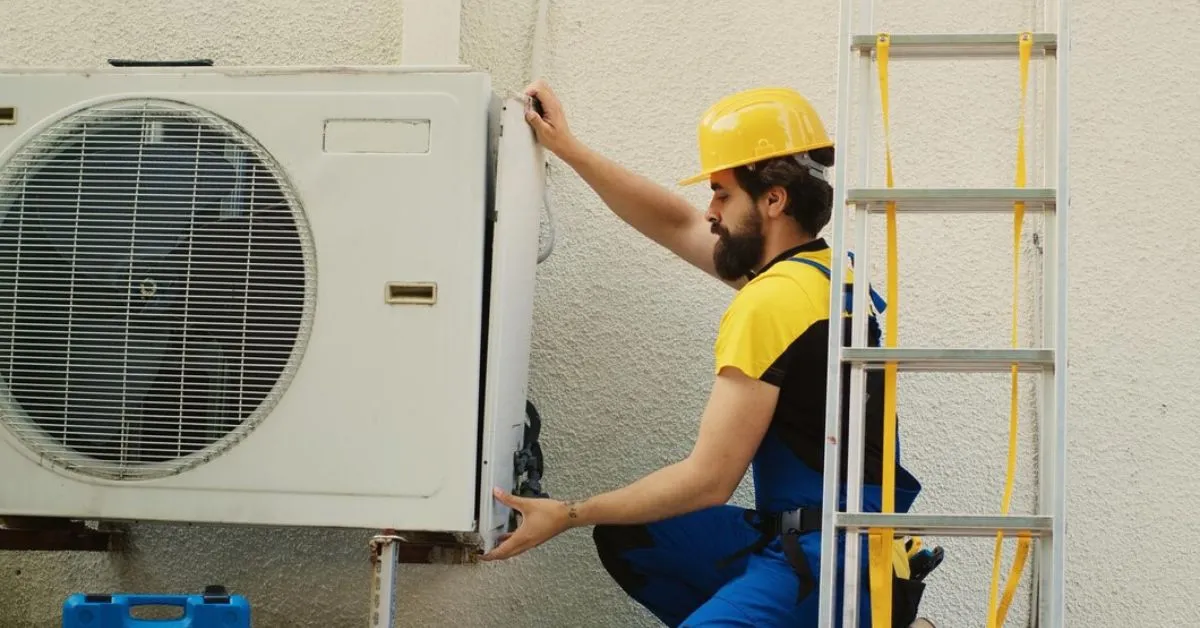When an air conditioner stops working properly, especially during the hotter months, it can cause significant discomfort. The YEX382V3YTE air conditioner, like any other HVAC system, may encounter issues over time. Understanding how to troubleshoot and repair YEX382V3YTE air conditioner can save both time and money, while also extending its lifespan. This article will guide users through essential steps for diagnosing and fixing common problems with the YEX382V3YTE air conditioning unit.
Initial Checks Before Repairing
Before diving into specific repairs, always start with basic checks. These initial steps often reveal common issues that can be easily resolved.
Check the Power Supply
The first thing to inspect is whether the air conditioner is receiving power. Make sure that the unit is properly plugged in and the circuit breaker hasn’t tripped. If the circuit breaker has tripped, reset it. Additionally, check for any blown fuses in the electrical panel that might be preventing the air conditioner from turning on.
Verify Thermostat Settings
Sometimes the issue is as simple as incorrect thermostat settings. Ensure the thermostat is set to a temperature lower than the current room temperature and is in cooling mode. If the settings are correct but the unit isn’t responding, it might be necessary to check or replace the thermostat.
Routine Maintenance to Prevent Problems
Regular maintenance plays a key role in preventing many air conditioner issues. By performing routine tasks, users can keep their YEX382V3YTE running efficiently.
Clean or Replace Air Filters
Air filters trap dust and dirt, which can clog and reduce the air conditioner’s performance and air quality. Over time, dirty filters can restrict airflow, leading to poor cooling. Clean or replace filters every 1-3 months, especially during periods of heavy use. Reusable filters can be washed with mild soap and water, while disposable filters need to be replaced with new ones.
Inspect and Clean Coils
Both the evaporator and condenser coils need regular cleaning to ensure proper functioning. Dust and debris build-up on the coils can reduce the system’s efficiency, making it harder to cool the room. Use a soft brush to clean the coils, or seek a professional technician if deep cleaning is required.
Troubleshooting Common Issues
Despite regular maintenance, problems can still arise. Below are some common issues with the YEX382V3YTE air conditioner and potential solutions.
Unit Runs But Does Not Cool
If the unit is running but not producing cool air, it could be due to low refrigerant levels, a dirty air filter, or malfunctioning coils. Start by checking the air filters and coils as mentioned above. If the problem persists, there may be a refrigerant leak, which requires professional repair.
No Airflow From Vents
If there is no airflow at all, the blower fan could be malfunctioning. Check the fan motor for any blockages or mechanical failures. If the motor isn’t working, it might need to be replaced. Ensure there are no obstructions like furniture or curtains blocking the air vents.
Unusual Noises
Air conditioners should run quietly. If strange sounds like banging, grinding, or hissing are coming from the unit, it could indicate loose components, motor issues, or refrigerant leaks. Investigate the source of the noise and secure any loose parts. If the noise continues, it’s best to contact a professional technician.
Water Leaks
Leaking water from the air conditioner can occur if the condensate drain line is blocked or if the unit is not level. Inspect the drain pan and drain line for blockages. Clear any clogs using a thin wire or vacuum designed for this purpose. Make sure the unit is level to prevent water from pooling.
When to Call a Professional
While many minor issues can be fixed at home, certain problems require professional attention. Here are some situations where it’s best to consult an HVAC technician:
- Refrigerant Leak: Handling refrigerants requires special certification. If the unit is low on refrigerant, a certified technician must locate and repair the leak before recharging the system.
- Compressor Issues: The compressor is the heart of the air conditioner. If it fails, the unit won’t cool properly. Compressor replacement or repair should only be done by a professional.
- Electrical Problems: Repeated circuit breaker trips, burning smells, or visible sparks are clear signs that there’s an electrical issue. These problems can be dangerous and should always be handled by an expert.
What tools are needed for Repairs?
To repair a YEX382V3YTE air conditioner, having the right tools on hand can make the process much smoother and safer. While some repairs are simple and require basic tools, others may need specialized equipment. Below is a list of the most common tools required for troubleshooting and fixing various issues with the air conditioner.
Essential Tools for Basic Repairs
Screwdrivers
A set of both flathead and Phillips screwdrivers is crucial for removing and securing panels, accessing the internal components of the air conditioner, and making minor adjustments. Ensure the sizes match the screws on your unit.
Multimeter
A multimeter is used to check electrical connections and diagnose power issues. It measures voltage, current, and resistance, helping identify problems with the unit’s electrical components like the thermostat, capacitors, or fuses.
Pliers and Wrenches
A set of pliers (needle-nose and regular) and adjustable wrenches are essential for gripping and tightening or loosening nuts and bolts within the air conditioning system.
Cordless Drill or Driver
A cordless drill can speed up the process of removing screws and panels, especially when multiple components need to be accessed. Make sure to use the appropriate drill bits for the screws used in the air conditioner.
Fin Comb
A fin comb helps straighten out the fins on the evaporator and condenser coils, which can become bent over time. Straight fins improve airflow and the efficiency of the unit.
Level
A level is necessary to ensure that the air conditioning unit is positioned correctly. If the unit is not level, water drainage can be disrupted, leading to leaks.
Vacuum Cleaner
A wet/dry vacuum is helpful for cleaning dust and debris from the inside of the unit and the surrounding areas. It’s also useful for clearing out the condensate drain line if it becomes clogged.
Garden Hose
A garden hose can be used to clean the outdoor condenser coils. Gently spray the coils to remove dust and debris, but be careful not to use too much pressure as this can damage the delicate fins.
Specialized Tools for Advanced Repairs
Refrigerant Gauge Set
A refrigerant gauge is required for checking refrigerant levels in the system. This is essential if the air conditioner is not cooling effectively, and low refrigerant levels are suspected. Note: Handling refrigerants often requires professional certification, so this tool is typically used by trained HVAC technicians.
Manifold Gauge Set
This tool is used to measure the pressure of the refrigerant in the system. It helps diagnose issues like refrigerant leaks or system blockages. It’s an important tool for more advanced diagnostics.
Refrigerant Leak Detector
A leak detector is used to identify refrigerant leaks in the system. Detecting leaks early is essential because low refrigerant levels can reduce cooling efficiency and damage the compressor.
Capacitor Tester
An air conditioner’s capacitor helps power the fan and compressor. A capacitor tester measures the capacitance and checks if the capacitor is functioning properly. If it fails, it can prevent the unit from starting or running correctly.
Additional Tools for Comprehensive Maintenance
Thermostat Tester
This tool checks if the thermostat is working correctly by measuring the temperature and sending signals to the air conditioner.
Coil Cleaner
A commercial coil cleaner is used to clean the evaporator and condenser coils, ensuring they remain free of dirt and debris. Cleaner coils improve the unit’s efficiency.
Clamp Meter
A clamp meter helps measure the electrical current flowing through the air conditioner’s wires without having to disconnect them. This tool is useful for diagnosing electrical issues.
Hose Nozzle
A nozzle attachment for the garden hose allows for more controlled water pressure when cleaning the outdoor unit’s condenser coils.
Personal Protective Equipment (PPE)
Safety Glasses
Always wear safety glasses to protect your eyes from dust, debris, and any unexpected electrical sparks.
Gloves
Wear insulated gloves when dealing with electrical components to avoid the risk of electric shock.
Dust Mask
A dust mask helps protect against inhaling dust and allergens when cleaning filters and coils.
Regular Maintenance for Longevity
To avoid unexpected breakdowns and costly repairs, regular maintenance is key. Here are some tips to keep the YEX382V3YTE air conditioner running efficiently:
- Change Filters Regularly: Clean or replace the air filters every 1-3 months to maintain good airflow and efficiency.
- Schedule Annual Tune-Ups: A professional technician should inspect and service the unit annually, checking refrigerant levels, cleaning coils, and ensuring all components are working properly.
- Clear Debris Around the Outdoor Unit: Keep the outdoor condenser unit free of leaves, grass, and debris that could block airflow and reduce cooling performance.
Conclusion
Proper maintenance and timely troubleshooting are essential for keeping the YEX382V3YTE air conditioner in good working condition. Simple issues like clogged filters or incorrect thermostat settings can be easily fixed by users, but more complex problems like refrigerant leaks or compressor failures require professional assistance. By staying on top of maintenance and addressing issues promptly, the lifespan of the air conditioner can be significantly extended.
FAQ:
What should be checked first if the air conditioner stops working?
Start by checking the power supply and ensuring the unit is plugged in. Then, check the circuit breaker and thermostat settings.
Why is my air conditioner running but not cooling?
This could be caused by dirty filters, low refrigerant levels, or malfunctioning coils. Check the filters and coils first, and contact a professional for refrigerant issues.
How often should air filters be cleaned or replaced?
Filters should be cleaned or replaced every 1-3 months, especially during periods of heavy use. A clean filter improves both cooling performance and air quality.
Why is water leaking from my air conditioner?
Water leaks can result from a blocked condensate drain line or an uneven unit. Check the drain line for clogs and ensure the unit is properly leveled.
When should a professional technician be called?
A professional should be contacted for issues like refrigerant leaks, compressor failures, electrical problems, or any complex repairs that go beyond basic troubleshooting.

